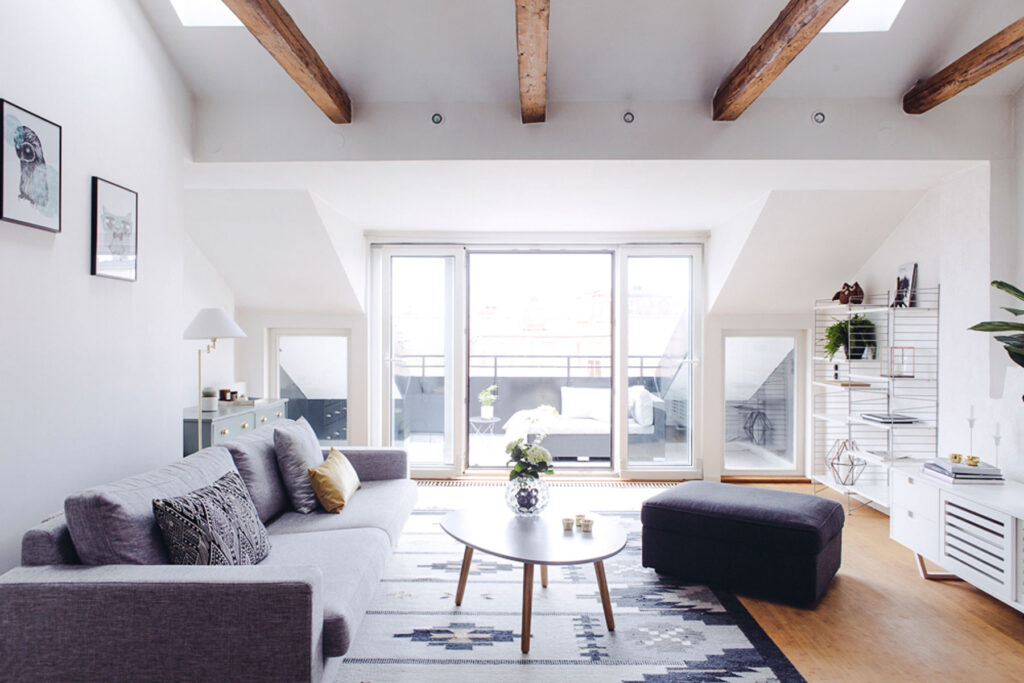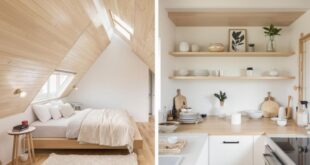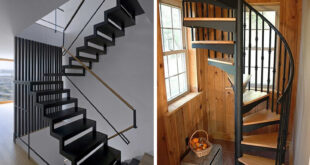
The Allure of the Minimalist Home: Finding Peace in Simplicity
In an era defined by excess and constant stimulation, the minimalist home offers a refreshing alternative. More than just a design trend, embracing minimalist home living is a conscious choice to prioritize experiences over possessions, and tranquility over clutter. This article explores the core principles of minimalist design, its benefits, and practical tips for transforming your space into a haven of simplicity.
What is Minimalist Home Design?
Minimalist home design is characterized by simplicity, clean lines, and a focus on functionality. It’s about intentionally living with only the essentials – the items that bring value and joy to your life. This doesn’t mean sacrificing comfort or style; rather, it’s about curating a space that is both aesthetically pleasing and highly functional.
- Less is more: This is the foundational principle. It encourages decluttering and simplifying your belongings.
- Functionality: Every item should serve a purpose. Decorative items are kept to a minimum, and those that are present should be meaningful and visually appealing.
- Clean lines and open spaces: Minimalist home designs often feature clean architectural lines, open floor plans, and a sense of spaciousness.
- Neutral color palettes: Neutral colors like white, gray, and beige are commonly used to create a calming and serene atmosphere. Pops of color can be introduced through artwork or plants.
- Natural light: Maximizing natural light is crucial in a minimalist home. Large windows and minimal window coverings are often employed.
- Quality over quantity: Investing in high-quality, durable items is preferred over accumulating cheaper, disposable goods.
The Benefits of a Minimalist Home
Adopting a minimalist home lifestyle offers numerous benefits that extend beyond aesthetics:
- Reduced stress and anxiety: A clutter-free environment can significantly reduce stress and anxiety. Less visual noise allows for a calmer and more focused mind.
- Increased productivity: A streamlined and organized space can boost productivity by minimizing distractions and promoting efficiency.
- More free time: Less stuff means less time spent cleaning, organizing, and maintaining your belongings. This frees up time for pursuing passions and spending time with loved ones.
- Improved focus: A minimalist environment can enhance concentration and focus by eliminating visual distractions.
- Financial savings: By consuming less, you can save money and reduce your environmental impact. A minimalist home encourages mindful spending and discourages impulsive purchases.
- Greater appreciation for what you have: Minimalism encourages you to appreciate the things you own and to be grateful for the simple pleasures in life.
- Environmental benefits: Reduced consumption leads to less waste and a smaller carbon footprint. Minimalist home practices often include sustainable and eco-friendly choices.
How to Create a Minimalist Home: Practical Tips
Transforming your home into a minimalist haven is a process that requires commitment and intentionality. Here are some practical tips to get you started:
Start with Decluttering
The first step is to declutter your belongings. Go through each room and identify items that you no longer need, use, or love. Be honest with yourself and let go of anything that doesn’t add value to your life. Consider donating, selling, or responsibly disposing of unwanted items.
The KonMari method, popularized by Marie Kondo, is a popular approach to decluttering. It involves sorting items by category (clothing, books, papers, miscellaneous items, and sentimental items) and asking yourself if each item “sparks joy.” If it doesn’t, let it go.
Focus on Functionality
When choosing furniture and decor, prioritize functionality. Opt for pieces that serve multiple purposes and maximize space. For example, a sofa bed can provide extra sleeping space for guests, while a coffee table with storage can help keep clutter at bay.
Embrace Neutral Color Palettes
Neutral colors create a calming and serene atmosphere. Stick to a limited color palette of whites, grays, beiges, and other neutral tones. You can add pops of color through artwork, plants, or accent pieces, but keep the overall palette cohesive and understated.
Maximize Natural Light
Natural light is essential in a minimalist home. Open up your windows and let the sunshine in. Use sheer curtains or blinds to filter the light without blocking it completely. Mirrors can also be used to reflect light and make a space feel brighter and more spacious.
Choose Quality over Quantity
Invest in high-quality, durable items that will last for years to come. Avoid buying cheap, disposable goods that will quickly end up in the landfill. Focus on acquiring fewer, but better, items that you truly love and will use for a long time. A minimalist home values lasting quality.
Create Designated Storage Spaces
Effective storage solutions are crucial for maintaining a clutter-free environment. Invest in storage containers, shelves, and cabinets to keep your belongings organized and out of sight. Designate specific areas for different items and make sure everything has a place.
Practice Mindful Consumption
Once you’ve decluttered and simplified your space, be mindful of what you bring into your home. Before making a purchase, ask yourself if you truly need it and if it aligns with your minimalist values. Avoid impulsive purchases and focus on acquiring items that will add value to your life. The goal of a minimalist home is to reduce consumption.
Incorporate Greenery
Plants can add life and vibrancy to a minimalist home. Choose a few carefully selected plants that complement your decor and provide a touch of nature. Plants can also help purify the air and create a more relaxing atmosphere.
Maintain a Consistent Cleaning Routine
A clean and organized home is essential for maintaining a minimalist aesthetic. Establish a regular cleaning routine to keep your space tidy and clutter-free. A little bit of maintenance each day can prevent clutter from accumulating and make your home feel more welcoming.
Personalize Your Space
While minimalism emphasizes simplicity, it doesn’t mean your home should be devoid of personality. Incorporate a few carefully chosen items that reflect your interests and values. This could include artwork, books, or personal mementos. The key is to keep it minimal and avoid cluttering your space with unnecessary items. A minimalist home should still feel like *your* home.
Common Misconceptions About Minimalist Homes
There are several common misconceptions about minimalist home design. It’s important to dispel these myths to understand the true essence of minimalism:
- Minimalism is cold and sterile: While minimalist design often features neutral colors and clean lines, it doesn’t have to be cold or sterile. By incorporating warm textures, natural materials, and personal touches, you can create a cozy and inviting minimalist home.
- Minimalism is expensive: Minimalism doesn’t necessarily require expensive furniture or decor. In fact, it can often be more affordable than traditional design styles, as it encourages you to consume less and focus on quality over quantity.
- Minimalism is only for certain types of people: Minimalism is not limited to a specific demographic or lifestyle. Anyone can benefit from simplifying their surroundings and embracing a more minimalist way of life.
- Minimalism means getting rid of everything: Minimalism is not about deprivation. It’s about intentionally choosing what to keep and what to let go of. It’s about curating a space that reflects your values and supports your well-being.
The Future of Minimalist Home Design
As people increasingly seek refuge from the chaos of modern life, the allure of the minimalist home is likely to grow. The future of minimalist design may involve a greater emphasis on sustainability, technology integration, and personalization. We may see more homes that incorporate smart home technology to simplify daily tasks and reduce energy consumption. [See also: Sustainable Home Design Trends] We may also see a greater focus on creating spaces that are both functional and aesthetically pleasing, with a strong emphasis on natural materials and biophilic design.
Ultimately, the minimalist home is a reflection of a conscious and intentional way of life. It’s about creating a space that supports your well-being and allows you to focus on what truly matters. By embracing simplicity and letting go of excess, you can transform your home into a haven of peace and tranquility.
 Nimila
Nimila




